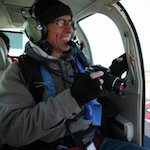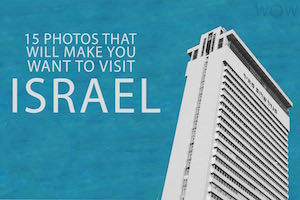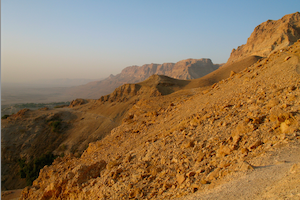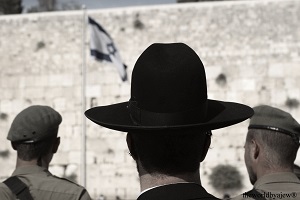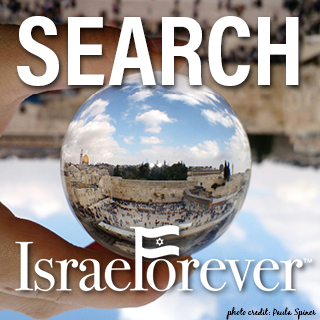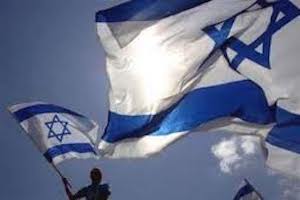Tracing Torah: a ‘Seeing Israel’ Smartphone Photo Essay
By Dave Bender
All photos: www.davidbrianbender.com, All Rights Reserved. “Behind-the-Scenes” photographic notes follow.
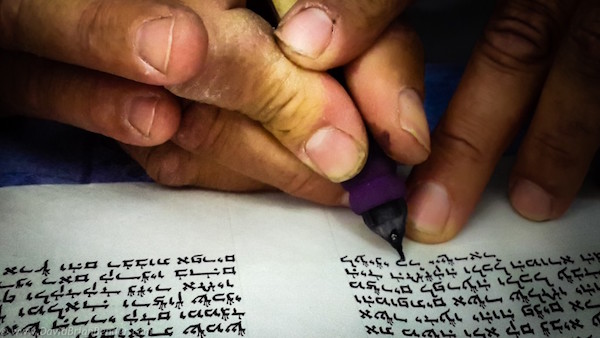
As night gathers over the birthplace of Kabbalah, a devout Jewish scribe readies his tools alongside a nearly-completed Torah scroll
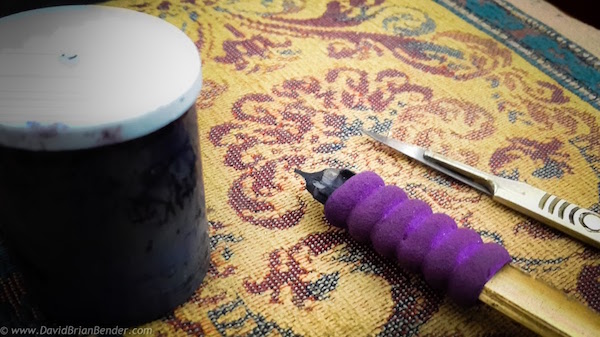
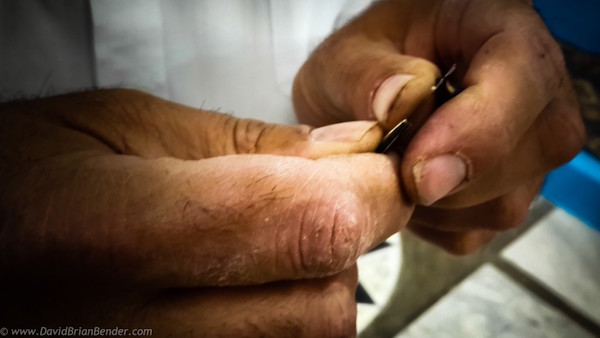
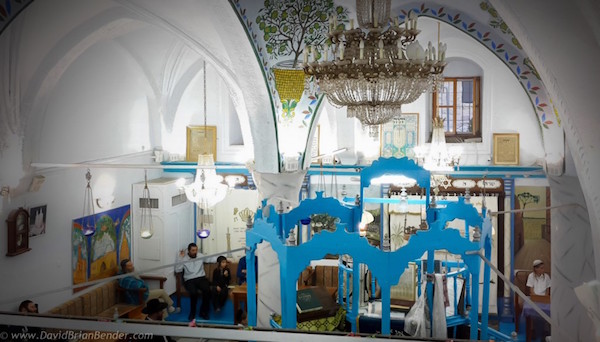
As he prepares, cool, pine-scented air wafts through the painted arches of Safed’s striking 16th cent. Abuhav Synagogue.
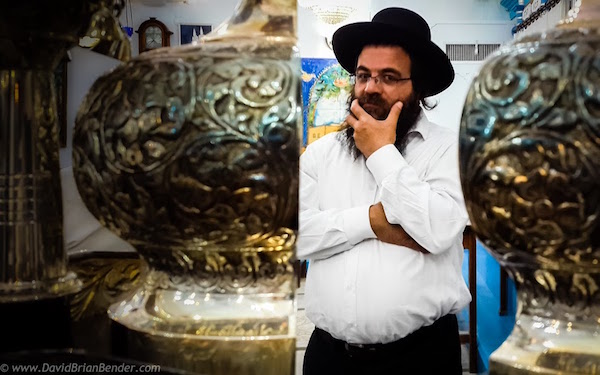
Mulling the task ahead, Meir Biton carefully scans the Biblical text.
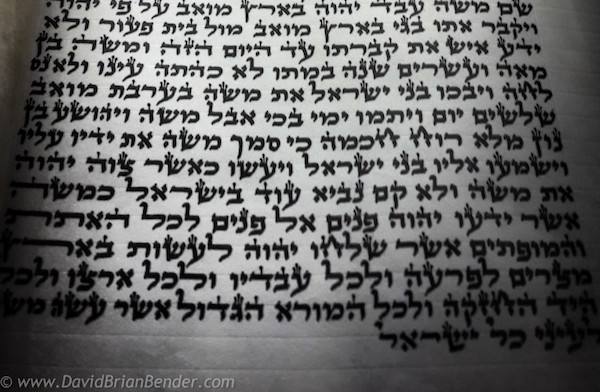

Alongside the unrolled scroll awaits a compact, ornately decorated Sephardic-style wooden enclosure.
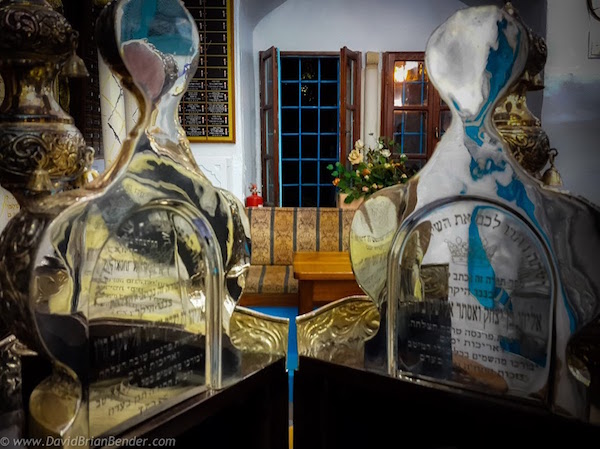
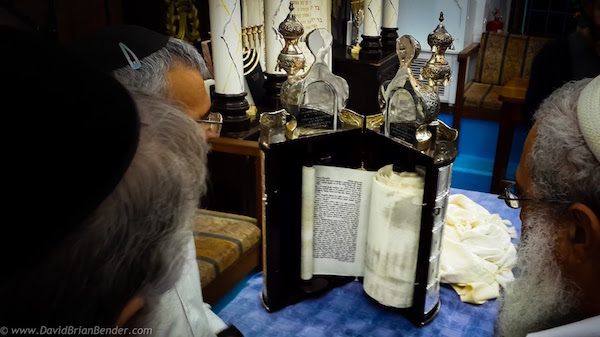
Biton’s ink-stained fingers deftly carve, and then attach a nib to a split bamboo stylus, and he takes a seat at a cloth-covered table along the bima.
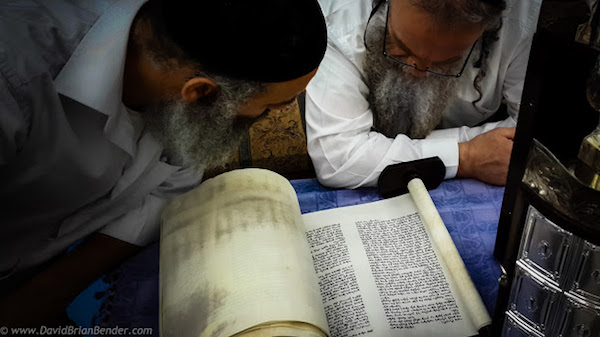
Biton and others present intently study the quality of the hand-lettering, previously prepared by another scribe.
In the sacred silence, Biton whispers an ancient blessing to help focus on his crucial deed; one misspelled letter would invalidate the entire scroll.
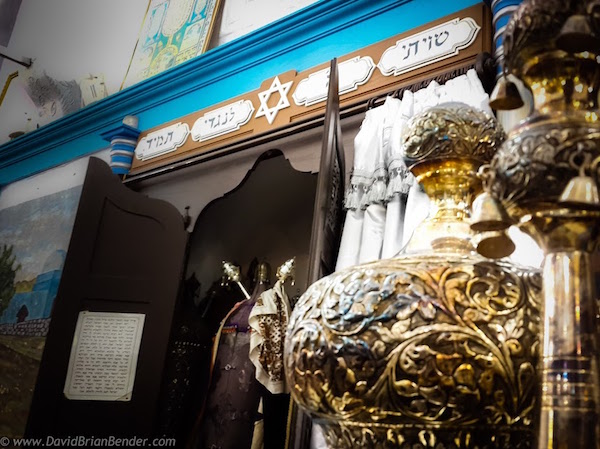
“I have placed God before me, always” (Ps. 16:8), emblazoned above the opening to the Aron Kodesh, where the scrolls are kept.
This is the second such Torah donated by the Elishkovs of Rishon L’tzion, both occasions marking the Bar Mitzva of sons of the Georgian immigrant family.
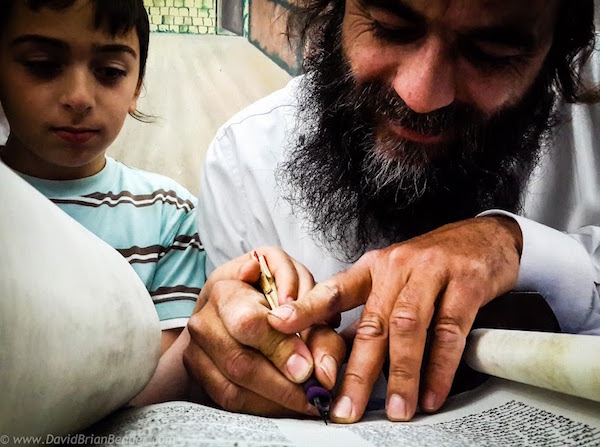
One after another, Biton gently rests the hand of the son, then, father and then guests upon his own, as he repeats the sacred act, painstakingly inking letter after letter.
Each Jew is enjoined to write their own Sefer Torah; this ritual allows them to partner in the holy moment, and become living links in the chain they themselves forge.
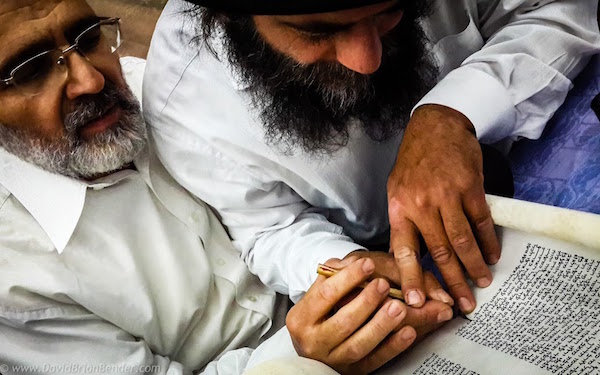
Pen inks parchment, as the faintly-traced Hebrew letters become the last word of the five Books of Moses: Israel.
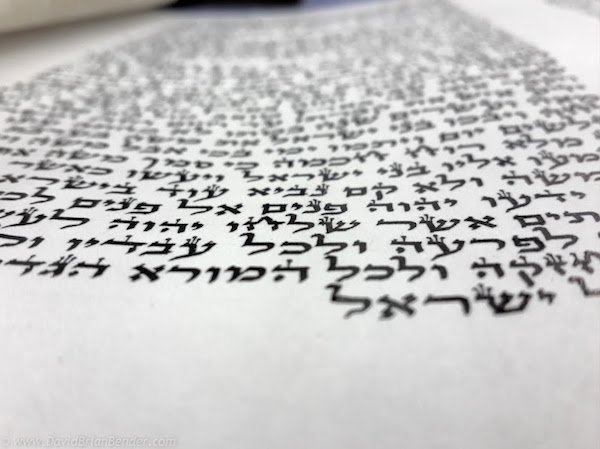
After the ceremony, the scroll takes its place among the other scrolls brought over the centuries from locations across the Middle East, back to their ancestral home.
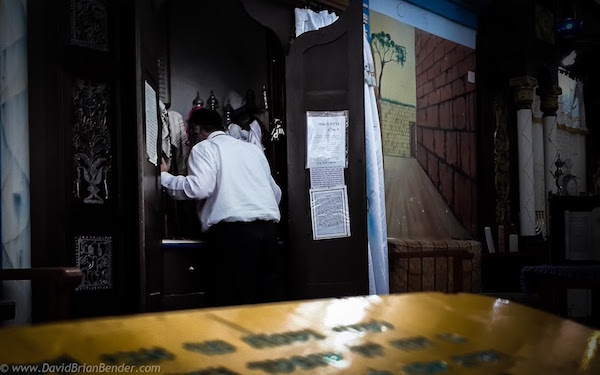
A synagogue member kisses a Torah scroll, reposing within the Aron Kodesh.
PHOTOGRAPHIC NOTES
My main DSLR camera setup is a Nikon D750 and assorted macro to telephoto lenses, and an LG-V20 as Smartphone. However, impromptu opportunities like this prove the dictum that “the best camera is the one you have with you,” hence my suggestion: always have a device on hand.
Initially, I’d just ducked into Abuhav earlier for evening services, and hadn’t known of the planned event.
I shot these images with a Samsung Galaxy Note 3, via the Better Camera app. I carefully set the ISO (the sensor’s sensitivity to light), exposure, white balance for the fluorescent lights, and, finally, set macro or standard focus settings, depending on the shot.
But no matter what level camera/smart/phone you may be using, here are two important suggestions:
* Always shoot at the highest resolution possible, so you’ll have more to crop from later.
* Don’t preset in any effects (Black & White, HDR, “Instagram,” etc.), since they make it far harder to correct or remove later, and can easily be added in via an in-camera editing app instead.
Flitting around the action (well, as discreetly as possible…), I tried to get as many angles as possible, at different aperture and focus settings. I tried to avoid the all-too-common Smartphone and DSLR “eye-level-now-everybody-smile-for-the-camera!” shots.
Editing in Lightroom 5, I tightly cropped and vignetted several of the shots, both to draw attention to the specific subject and to suggest the drama of the moment.
I saved the images in lower-resolution .jpg format, as seen here, as well as far higher .tiff. Both .tiff and in-camera .raw save all the information in the image, thus allowing far great flexibility in editing the image afterward.
I welcome your thoughts and feedback on this first in what I hope to develop into a photo essay series, featuring various sites and events in Israel. I also offer photography workshops for individuals and groups here in Safed and elsewhere in Israel via the booking page on my website: https://www.davidbrianbender.com/book-online
I’ll do my best to share both the story in the photos themselves, and take you behind the scenes of how I got the shots.
In order to foster a two-way dialogue with you, the reader, and beginner and intermediate photographer, feel free to include your photos of the same locales in your comments so we can “contrast and compare” results.
More Photo Blogs:
Do You Have a Story to Tell?
Become an Israel Forever Blogger Today!
About the Author
